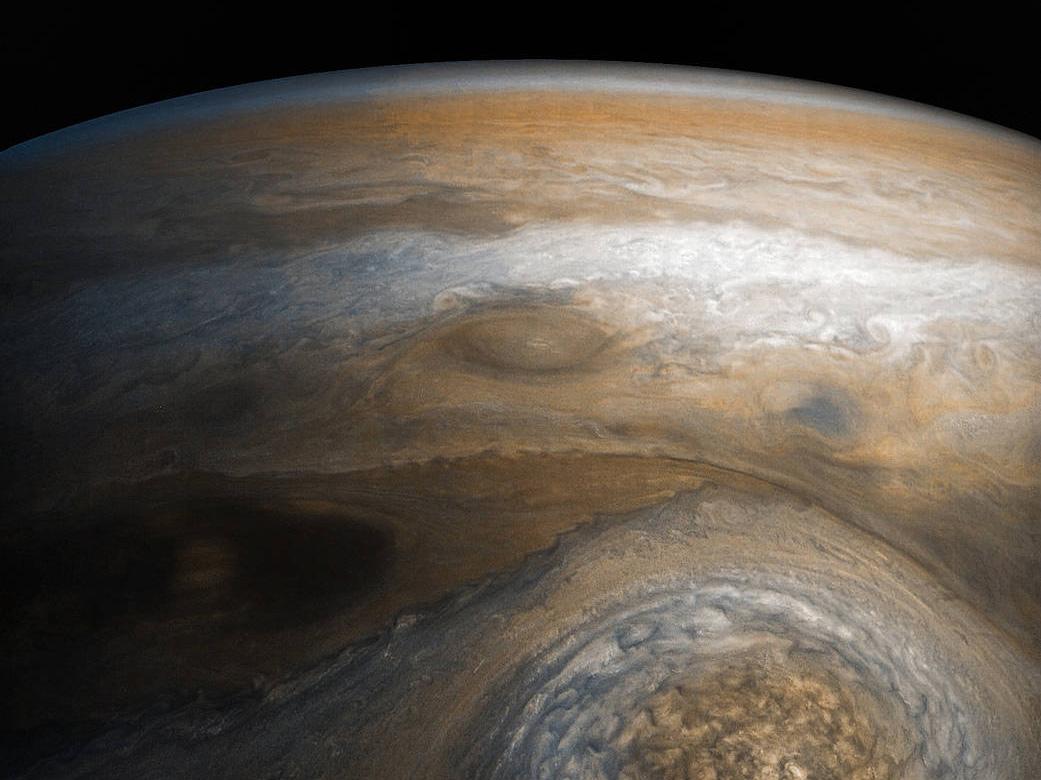World’s largest laser reveals extreme conditions inside solar system’s giant planets
Hydrogen gas inside Jupiter and Saturn is subjected to pressures millions of times greater than on Earth, turning it into a metallic liquid

Experiments with the world’s biggest laser have given scientists fresh insights into Jupiter and Saturn, the largest planets in our solar system.
Inside these giant planets, the hydrogen gas that forms a key part of their structure is subjected to pressures and temperatures 6 million times higher than Earth’s atmosphere.
Under these extreme conditions, hydrogen stops behaving like a gas and instead is squeezed until it takes on the properties of a liquid metal.
To understand this process, researchers made use of the National Ignition Facility in California, the largest and most advanced laser in the world.
They fired powerful beams at a gas sample, raising it to a pressure similar to that found on Jupiter.
In doing so, they watched as hydrogen turned from an invisible gas to a transparent liquid, which then turned black as the pressure mounted even further and ultimately resembled a reflective metallic substance similar to aluminium.
“Arguably we have known about the existence of this metallic state of hydrogen for roughly 100 years, and it has been measured for around 25 years,” Dr Stewart McWilliams of the University of Edinburgh told The Independent.
“But the question that has been persisting is where inside Jupiter, for example, this transformation to a metallic state would occur.”
In their study, published in the journal Science, Dr McWilliams and his colleagues documented this process in unprecedented detail.
They found that the transition from transparent to opaque material took place as the hydrogen was squeezed under about 1.5 million times normal atmospheric pressure, and the metallic state arrived as this came closer to 2 million times.
“To build better models of potential exoplanetary architecture, this transition between gas and metallic liquid hydrogen must be demonstrated and understood,” explained Dr Alexander Goncharov from the Carnegie Institution for Science.
“Which is why we focused on pinpointing the onset of reflectivity in compressed deuterium [a type of hydrogen], moving us closer to a complete vision of this important process.”
Besides probing the inner workings of these distant planets, subjecting hydrogen to such intense treatments has a role to play closer to home in the development of new energy sources.
The ultimate goal of the National Ignition Facility, where the research took place, is to use lasers to compress hydrogen fuel with the goal of inducing nuclear fusion reactions.

Fusion energy is the opposite of fission energy – the type generated in nuclear power stations – and scientists have been trying to find a way to harness it for decades.
Unlike fission, which produces dangerous radioactive waste, fusion is expected to come with minimal safety concerns.
The main models for nuclear fusion are stars, and attempts to produce a workable fusion-based power source are in part attempts to emulate them. Dr McWilliams said their research adds another piece to this on-going puzzle.
“We are mapping the path hydrogen takes from a gas to the conditions we might see in the centre of Jupiter, and ultimately this will tell us how we reach conditions in the centre of stars – which are even more extreme than those we studied,” he explained.
Join our commenting forum
Join thought-provoking conversations, follow other Independent readers and see their replies
Comments
Bookmark popover
Removed from bookmarks